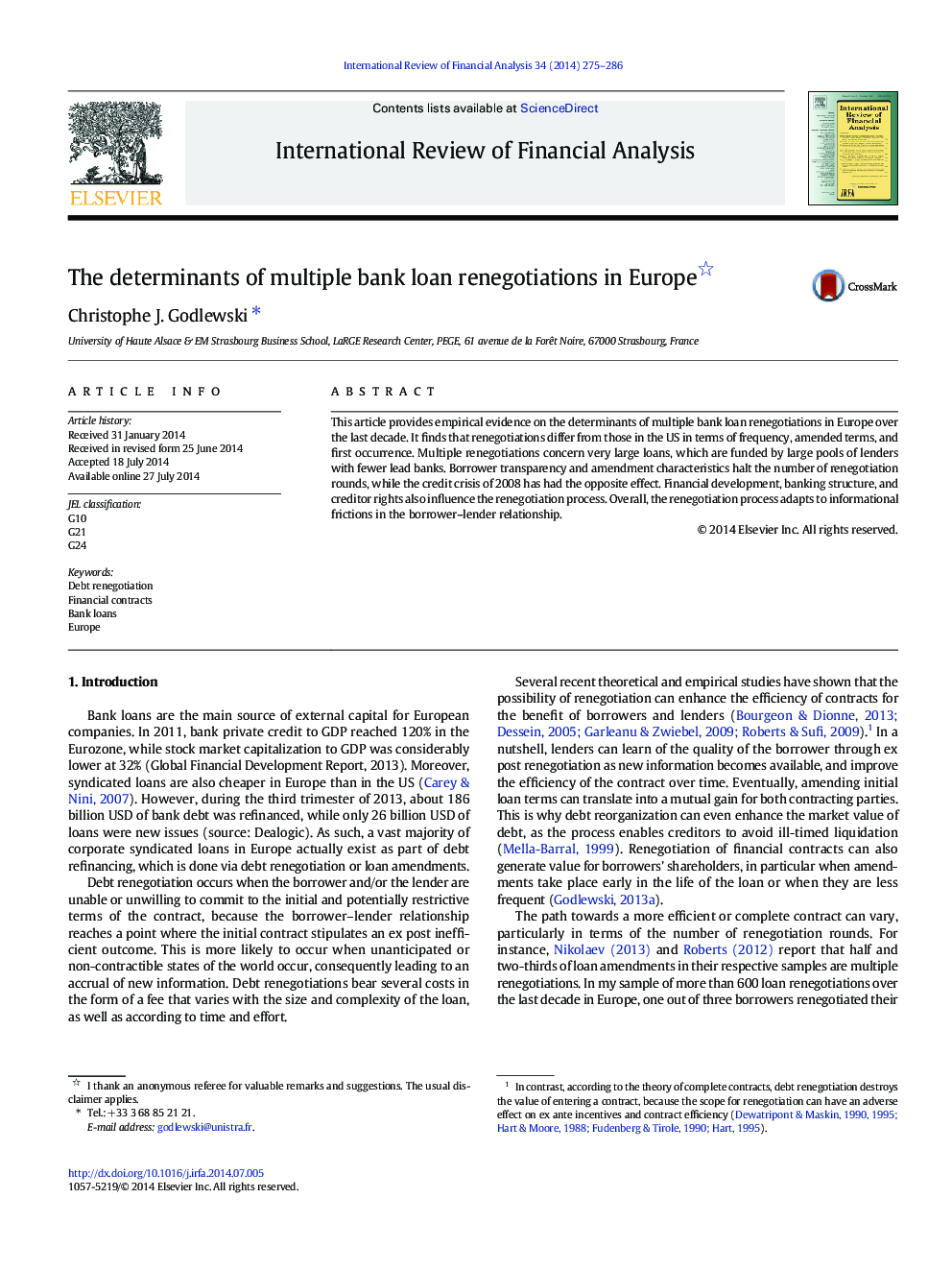| Article ID | Journal | Published Year | Pages | File Type |
|---|---|---|---|---|
| 5084886 | International Review of Financial Analysis | 2014 | 12 Pages |
Abstract
This article provides empirical evidence on the determinants of multiple bank loan renegotiations in Europe over the last decade. It finds that renegotiations differ from those in the US in terms of frequency, amended terms, and first occurrence. Multiple renegotiations concern very large loans, which are funded by large pools of lenders with fewer lead banks. Borrower transparency and amendment characteristics halt the number of renegotiation rounds, while the credit crisis of 2008 has had the opposite effect. Financial development, banking structure, and creditor rights also influence the renegotiation process. Overall, the renegotiation process adapts to informational frictions in the borrower-lender relationship.
Related Topics
Social Sciences and Humanities
Economics, Econometrics and Finance
Economics and Econometrics
Authors
Christophe J. Godlewski,
